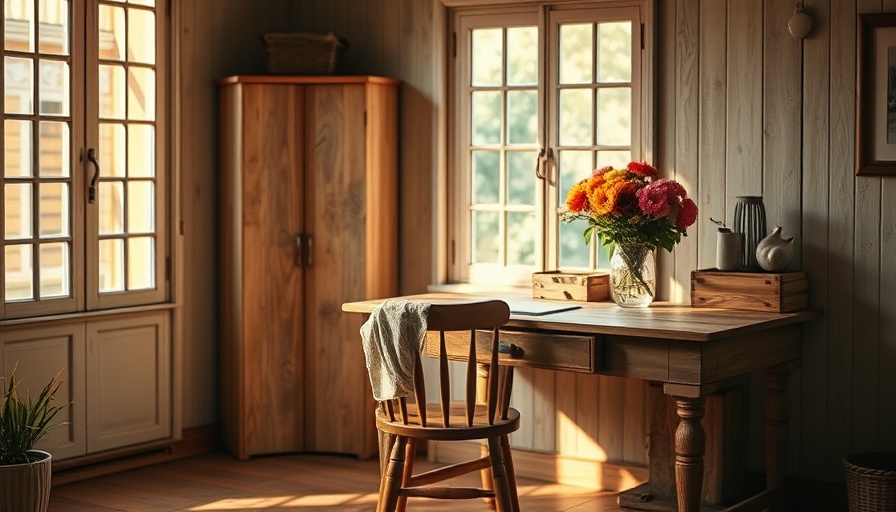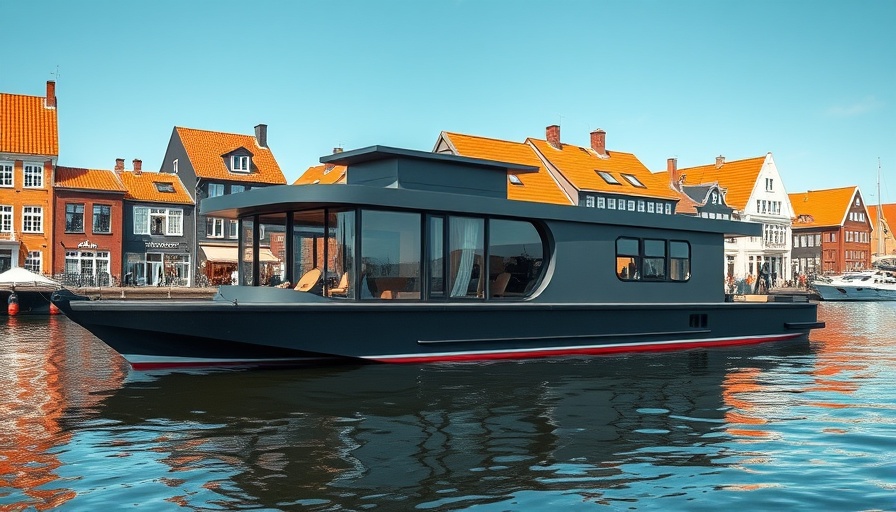
Slow Design: A Movement Towards Thoughtful Living
As we find ourselves surrounded by fast-paced lifestyles and mindless consumption, the concept of slow design offers a refreshing perspective rooted in intentionality and mindfulness. This approach encourages individuals to appreciate not just the aesthetics of their environment, but the stories and craftsmanship that contribute to our everyday experiences. Whether you're dressing your bed or curating your garden, the slow design ethos can transform your space into one that resonates with personal meaning and history.
The Philosophy Behind Slow Design
Originating from the broader slow movement, which includes slow food and slow travel, slow design emphasizes quality over quantity. It advocates for products that are sustainably made, inspired by nature, and crafted with care. This philosophy promotes an appreciation for local artisans, unique designs, and environmentally conscious materials. As we engage with our surroundings, adopting a slow design mindset helps foster a deeper connection between us and the objects within our homes.
The Benefits of Embracing Slow Design in Home Decor
In today's world, where consumerism often leads to clutter and dissatisfaction, slow design offers a viable alternative. By incorporating only what you truly love and need, your living space becomes more inviting and harmonious. This minimalistic approach allows for improved mental clarity and satisfaction, as each item reflects your personality and values. Enjoy the benefits of reduced clutter and curated aesthetics tailored to your lifestyle.
Mindful Gardening: A Natural Extension of Slow Design
Gardening provides an excellent opportunity to practice slow design principles. Whether you're creating an outdoor oasis or a potted herb garden, consider the plants' lifecycle, natural habitats, and growth requirements. Following tips from gardening experts, such as those available on social media platforms or dedicated blogs, can help you make informed decisions that reflect slow design philosophies. Engaging with the land not only nurtures our environment but also cultivates mindfulness and patience.
Future Trends in Slow Design: What to Expect
As eco-consciousness continues to rise, slow design is poised for greater recognition in the coming years. Trends suggest a shift towards greater customization options, as consumers demand products that resonate with their values and singular tastes. With advances in technology, the ability to create bespoke items—from furniture to decor—will make it easier to embrace slow design. Additionally, we can anticipate more brands prioritizing sustainable practices, thus igniting a more profound cultural shift towards responsibility in design.
Common Misconceptions about Slow Design
Many may mistakenly associate slow design with high costs or an inability to keep pace with trends. However, slow design can be as diverse as any other design approach. It allows for creativity in regeneration and repurposing materials, which can prove to be both cost-effective and environmentally friendly. Embracing slow design cultivates a culture of appreciation, enabling homeowners to connect with their possessions on multiple levels.
Taking Action: How to Incorporate Slow Design into Your Home
Ready to start your slow design journey? Begin by assessing your current living space. Identify items that hold emotional value and resonate with your tastes. Seek out local artisans, shop sustainably, and consider handmade or vintage items that embody history and character. Additionally, prioritizing plants that reflect local biodiversity can enhance your home's aesthetic while supporting the environment.
Embracing slow design is about more than aesthetics; it’s about creating a nurturing environment that enriches your quality of life. By prioritizing thoughtful choices and appreciating the stories behind our possessions, we can significantly transform how we live.
If you want to stay updated on slow design trends and tips to enhance your home, be sure to follow thoughtful design platforms and blogs. Dive deep into the world of slow design and don't miss out on its enriching impact on your lifestyle.
 Add Row
Add Row  Add
Add 






Write A Comment